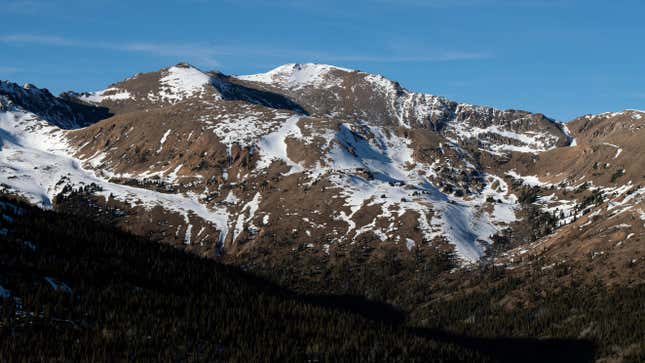
A series of storms could make a dent in the snow drought that has gripped the West to start winter. While they won’t end the longer-term megadrought by any means, they at least should get ski lifts turning, provide some nourishment to parched soils, and up the odds of a White Christmas.
Winter storm watches and warnings stretch from Arizona to Minnesota as a powerful system is set to streak across the region. The snow began on Thursday and will intensify on Friday, fed by moisture from the Pacific and a dip in the jet stream that has sent storms screaming into the Pacific Northwest so far this winter.
In the mountains of Colorado, up to 2 feet (60 centimeters) of snow could fall. Snow is also expected in Denver. The city broke an 87-year-old record for the latest first snowfall in November. Snow could also dust other locations currently lacking, including the mountains near Salt Lake City and the Sierra Nevada in California. Those locations will likely see lighter totals than Colorado, but any snow there is good snow.
The National Weather Service is warning of dangerous travel conditions, saying that once the storm hits the Plains driving “could be very difficult to impossible” due to snow cover. In parts of Colorado, the agency also issued avalanche warnings. “Heavy snow and strong winds will result in numerous natural avalanches on Thursday night,” forecasters wrote. “Very dangerous avalanche conditions continue into Friday with human-triggered avalanches very likely.”
Dangerous conditions aside, the storm will be a relief in terms of bringing needed moisture to the region. While the Pacific Northwest has received a fair share of precipitation since the wet season began last month, the rest of the West hasn’t been so lucky. Comparing this year to 2020—which was a roughly average year for Colorado and some parts of the interior West—shows a huge early-season deficit. Satellite imagery shows mountain peaks with patchy coverage and valleys with at least a dusting usually on the ground are completely bare. Ski areas have been hit hard as well, only opening runs where snowmaking equipment is in place.
Normally bad news, the snow drought has been particularly worrisome this year given the state of the West. Reservoirs plunged to record low levels this summer and fall thanks to a long-term precipitation deficit. Though California has been the poster child for the lack of precipitation, other parts of the West were hit just as hard. The Great Salt Lake also dipped to a record low. In the satellite image below snowing the lack of snow in Utah’s mountains, you can also see the lake in the upper left corner and its recession from 2020 to 2021.
A second storm is slated to hit the immediate West Coast next week, which would be a major boon for California. It will come with a blast of cold air, which means snow could fall in the foothill near Sacramento and other locations not used to seeing the white stuff. But even though the system is expected to be vigorous, with snowfall totals in the mountains measured in feet, it won’t be enough to break the grip of drought on the region.
There are a number of factors impacting the West’s weather. Natural climate patterns are playing a role. La Niña, a cooling of waters in the eastern tropical Pacific, formed this fall. That traditionally tilts the odds for more precipitation in the Northwest and less in the Southwest, trends that have played out so far this season.
But climate change has also altered background conditions in meaningful ways. Rising temperatures have upped the odds of precipitation falling as rain rather than snow. The upcoming California storm will be the exception to that rule; an analysis published last year by Climate Central found that weather stations in every region of the U.S. are seeing decreasing snowfall. Stations across the West are among the biggest losers, with Albuquerque seeing an astounding 50% change in annual snowfall while both Salt Lake City and Grand Junction, Colorado, have seen snowfall drop by 40% since 1970. The megadrought gripping the West is also a symptom of climate change. So the snow now is good, but there’s still a lot of factors working against the region seeing some semblance of normal anytime soon.